Emma Premium mattress review – a decent mattress, but lacks breathability
Our Emma Premium mattress review puts the brand's hybrid memory foam and pocket spring mattress through its paces to see if it lives up to the hype
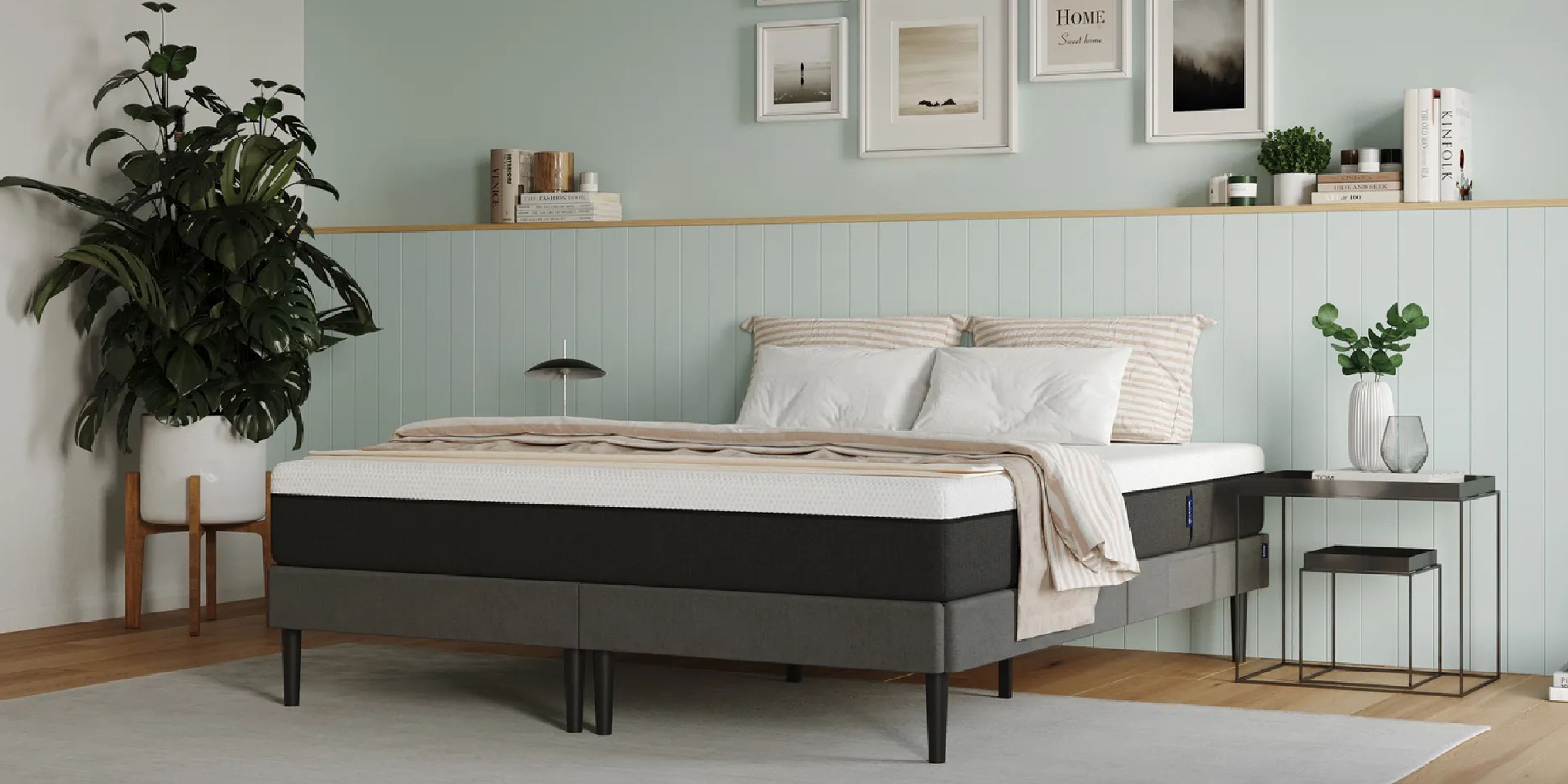
The Emma Premium mattress is a relatively affordable hybrid mattress that combines pocket spring support with memory foam cushioning. I found it a little firm, but heavier sleepers may find it suits them well. However, we found its lack of breathability impacted our sleep quality.
-
+
Relatively affordable
-
+
Decent for back sleepers or heavier side sleepers
-
+
Decent responsiveness
-
+
Decent motion isolation
-
+
Decent edge support
-
+
Mattress-in-a-box delivery useful for homes with awkward access
-
+
200-night sleep trial
-
-
Caused us to overheat
-
-
I found it too firm
-
-
Only doorstep delivery available
-
-
We couldn't find much evidence of efforts to reduce the product's environmental impact
Why you can trust Ideal Home

Update: Emma has now discontinued the Premium mattress. Our Emma Nextgen Premium mattress review puts the brand's new and improved version to the test.
Our Emma Premium mattress review puts one of the brand's most affordable hybrid mattress through its paces to see how it compares to the best mattresses Ideal Home has tested so far.
Quick review
The Emma Premium mattress is advertised as a medium-firm hybrid mattress that combines pocket spring support with a memory foam comfort layer.
In reality I found it to feel more firm than medium-firm, but that could be because I weigh in at around 70kg, so I'm at the lower end of the 50-130kg weight range the Emma customer service representative I spoke to recommended the mattress was most suitable for.
I predominantly sleep on my side, so I found this mattress lacked a little cushioning around my shoulders and hips, although when sleeping on my back that firmer feel was more comfortable.
However, the main issue I had with the Emma Premium mattress was its tendency to make me overheat at night. I usually consider myself to be a cool sleeper, but the Premium mattress caused me to wake up sweating in the night on numerous occasions, and my warm-blooded partner really struggled with the body heat the mattress reflected back towards us. Read on to find out more.
Emma Premium mattress review
Overall we consider ten factors when we test mattresses. We then use these to score each mattress out of 5. The Emma Premium mattress scored 4 out of 5. Read on to find out why.
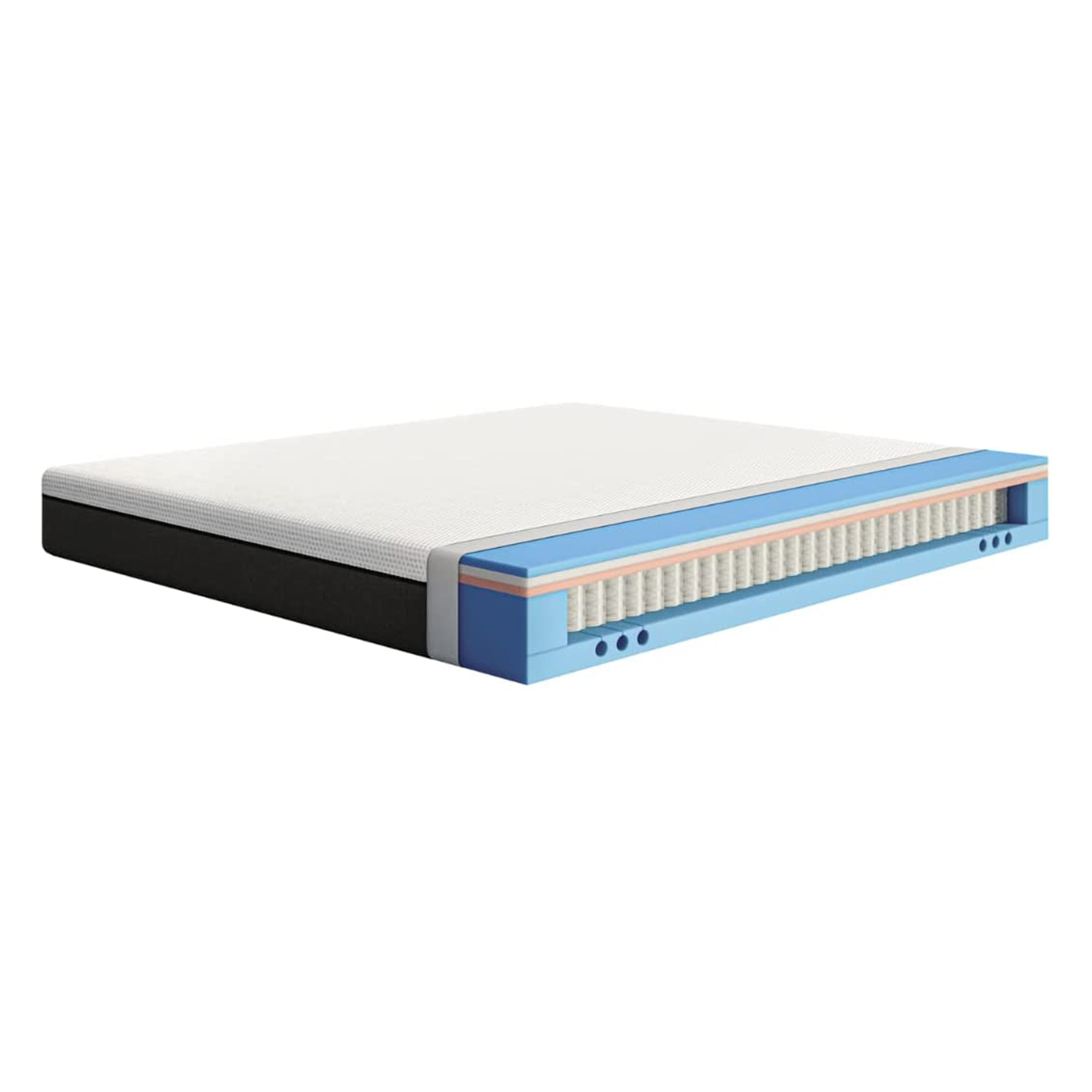

Specifications
Type: Hybrid
Construction materials: Pocket springs, foam, memory foam
Number of springs: 2000
Sizes: Single, Small Double, Double, King, Super King
Comfort level: Firm
Height: 25cm
Side handles: Yes
Manufacturer sleep trial: 200 nights
Sign up to our newsletter for style inspiration, real homes, project and garden advice and shopping know-how
1. Comfort
Emma rates the Premium mattress as a 6.5 on the firmness scale, which should make it a medium-firm tension.
This is often the tension recommended for people who sleep predominantly on their side or back – like me – and medium-firm mattresses are also the most recommended as the best mattress for back pain.
However, I defintitely found this mattress firmer than I was expecting from the online description. The Premium features a pocket spring base topped with a memory foam layer to add cushioning. Perhaps it was because it was cold when I started sleeping on this mattress so the memory foam didn't soften up as much as it might have done in warmer weather, but I definitely didn't find there to be enough cushioning to begin with.
In fact, I found myself having to change position frequently on this mattress to try and get comfortable as after lying on my side for a while I'd get pain in my hip from the firm sleep surface.
It was better when laying on my back, and obviously weight will make a difference to how a mattress feels for you. I spoke to a customer advisor at Emma and they recommended the Premium mattress is a good choice for those weighing 50kg to 130kg. I weigh in at around 70kg, so that suggests I would find it firmer than someone at the upper end of the scale who will sink further into the mattress – something worth bearing in mind if you're also a side sleeper on the lighter side.
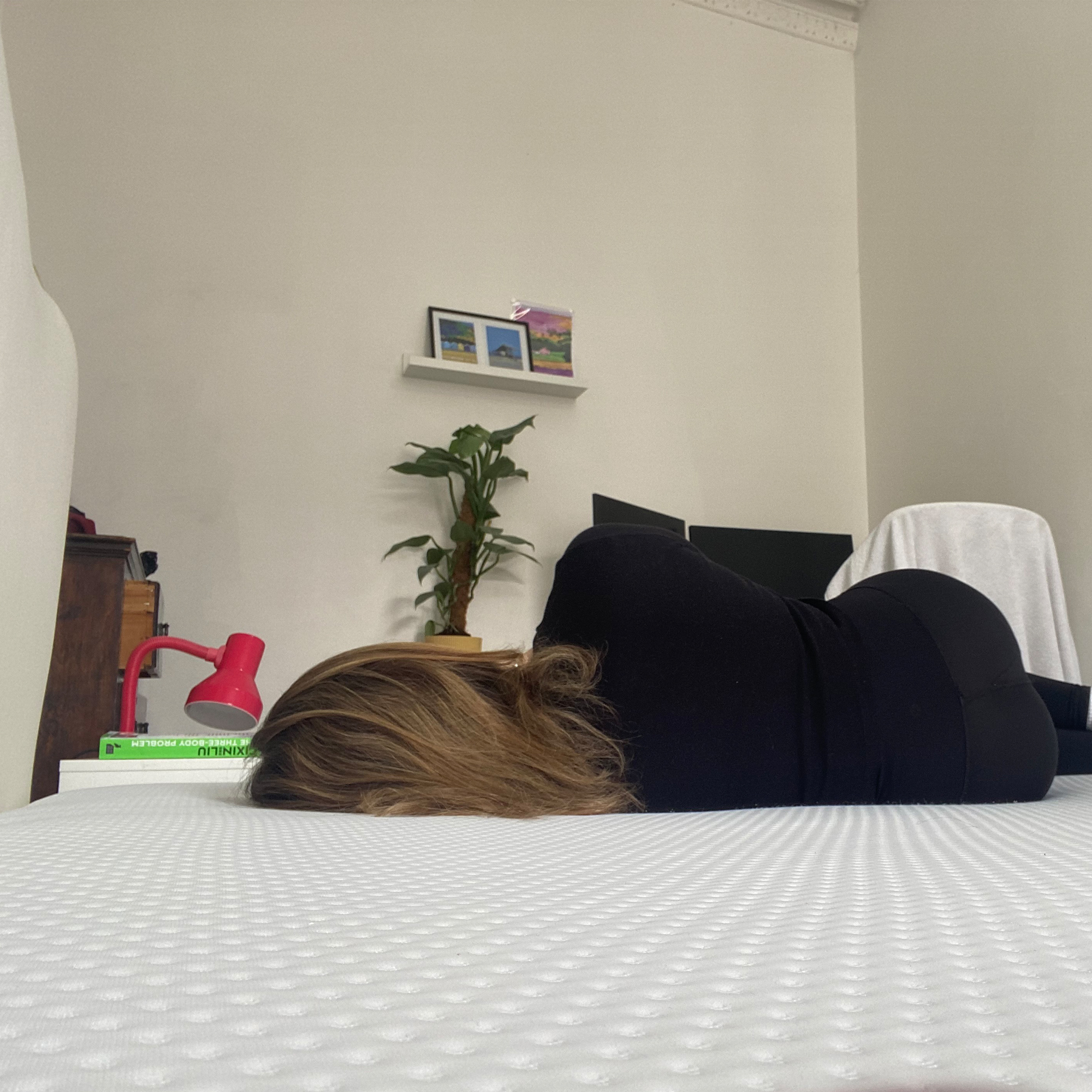
2. Responsiveness
On the plus side, the Premium mattress's firmer feel does mean I found it pretty responsive, meaning that it was easy to turn over and change position.
I've slept on memory foam mattresses before – like the all-foam Emma Original mattress – where the memory foam layer moulds around your body so much that it makes it hard to roll over and out of the body-shaped dip that's formed around you.
Not so on this mattress, although personally I'd be happy to exchange a bit more lag when changing position for some more cushioning for my joints!
3. Motion isolation
One noticeable improvement between the Emma Premium and our old sprung mattress is that now when my boyfriend gets up in the night, I find my sleep is less disturbed. In fact, there have been times since we've been sleeping on the Emma Premium that he's gotten up and gotten back into bed without me realising, which I didn't really think was possible before.
I'm not a light sleeper by any stretch, but I just always thought that I'd be able to notice that kind of movement in the bed, so the motion isolation of this mattress has really impressed me. Probably this is down to that memory foam top layer, as it does a great job of dampening surface movements and stopping them from travelling from one side of the mattress to the other.
I did a non-scientific test by placing a glass of water on the mattress and seeing how close I could walk towards it without tipping the glass. I came very close and the glass stayed upright, which was impressive.
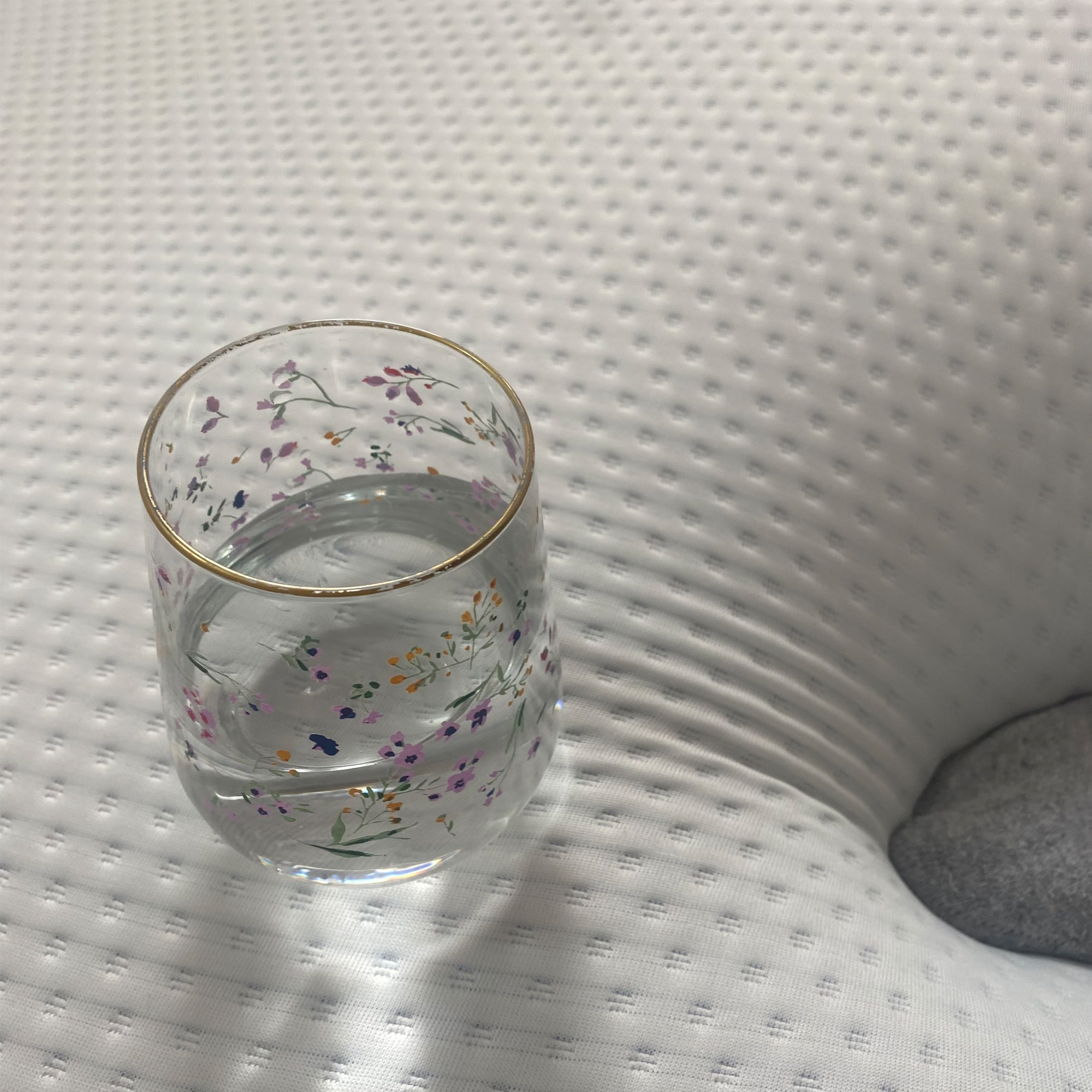
4. Temperature regulation
Other than finding the Premium mattress a little too firm for me when I laid on my side, the main issue my partner and I encountered during testing was finding it regularly made us too hot at night.
Though I consider myself to be a cold sleeper, I was waking up in the night sweating whilst sleeping on this mattress, whilst my boyfriend (who is constantly the approximate temperature of the sun) was beside himself after a few weeks due to broken sleep caused by the heat.
A little research seems to indicate that we're not alone. Emma is one of the UK's go-to mattress brands, however, one niggle that seems to emerge time and time again in (otherwise happy) customer reviews, is that the memory foam top layer on some Emma mattresses can reflect more body heat back towards the sleeper than is desired.
This can be a common problem with memory foam mattresses as the elasticated structure of memory foam means it lacks breathability, and a lack of breathability means a lack of air circulation which is what helps the body to regulate its temperature. All of our bodies release heat and humidity during the night, and if this can't dissipate and is instead reflected back towards us by non-breathable surfaces (like memory foam) that's what causes us to wake up at 3am and desperately throw the duvet off in a bid to cool down.
As advised by Emma, we solved the overheating problem with the Emma Premium by acquiring the Emma Premium Mattress Topper. As soon as it arrived and we added it on top of the Premium mattress our problems with temperature regulation were solved, plus it added a layer of extra comfort that I thought was much needed.
However, that topper costs £550 for the double. Almost as much as the mattress itself. And whilst you can get cheaper cooling mattress toppers, it's definitely still an unwanted extra expense.
If, like for us, overheating is a problem for you, but you still like the idea of a hybrid memory foam mattress, then I'd definitely recommend opting for the great value Simba Hybrid Original mattress, the even more breathable Simba Hybrid Pro mattress, or the Emma Luxe Cooling mattress – which does actually deliver on its cooling promise.
5. Edge support
Even though my partner and I share a king size bed, so I have plenty of space, I often still find myself sleeping on the edge of the mattress, so good edge support is very important to me.
The Premium mattress does have built-in edge support in the form of foam outer walls, but I wouldn't say that support is particularly sturdy. I find the mattress can still dip if I lie very close to the edge – more of an issue if you have a small bedroom so you're sharing a smaller mattress, or if you have kids who like to pile into bed too.
Lack of edge support can also be an issue if you find it a little harder to get out of bed, as you have less support to push against to stand up in the morning. In this case, this may not be the mattress for you.
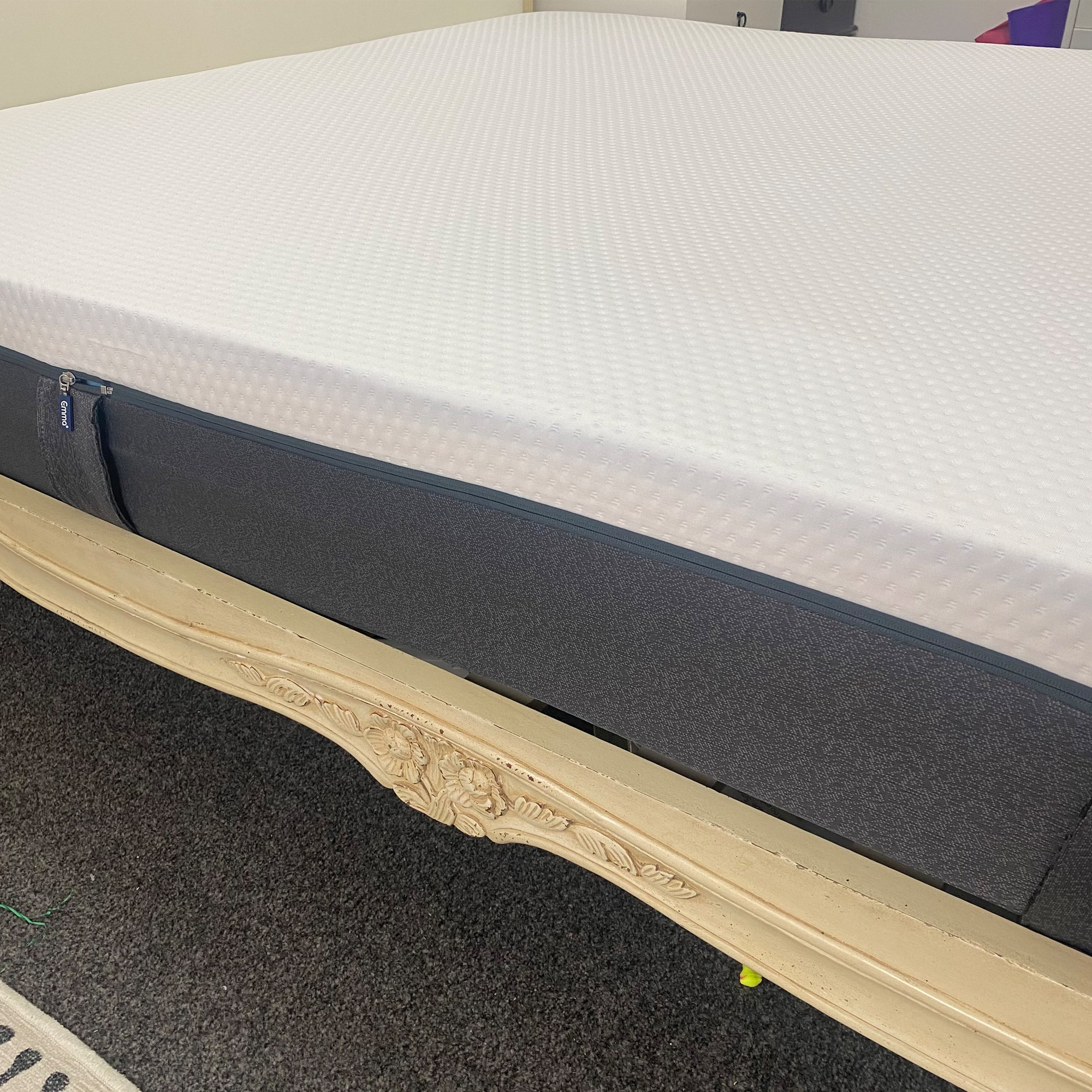
6. Ease of care
The Emma Premium mattress is one-sided, meaning you can only sleep on the top of the mattress. This means the mattress can't be flipped. Instead, Emma advises rotating it regularly to ensure even wear and tear. This is made easier thanks to side handles that help with the mattress' manouevrability.
A one-sided mattress could perhaps lack some longevity compared to a high quality two-sided mattress. After all, only one side means that side will get more wear and tear.
However, I do like the fact that you can unzip the cover of the Premium mattress and wash it. Of course, you can add a good mattress protector to any mattress to keep it clean and fresh – and you should, because it's a lot easier to wash a mattress protector than it is to figure out how to clean a mattress (especially how to clean a memory foam mattress, as these can require a little more TLC) – but it's a nice feature, and will potentially appeal to anyone with allergies who wants a way to make sure their bed is free from pollen or pet dander on a regular basis.
7. Sleep trial
A sleep trial is a great way to test out a mattress in your own home before you commit to purchasing it. Usually a sleep trial means you get anywhere from 30 and 365 nights to sleep on a mattress, with the option to return the mattress for a refund if it doesn't suit you.
It's important to check the small print of a sleep trial before you buy as these can differ between retailers, but, as of writing, Emma offers a generous sleep trial of up to 200 nights on the Premium mattress, which should plenty of time to assess whether, like me, you find it too firm or too hot.
Of course a sleep trial does come with some downsides, the main one being what happens to those mattresses that are returned. Simba, for instance, is explicit that all mattresses returned during a Simba sleep trial are fully recycled and given a new life to avoid landfill. Emma doesn't offer the same clarity, although it does mention that some mattresses are refurbished and resold via its own website. More on that in the Environmental Impact section.
8. Delivery
The Emma Premium mattress is delivered rolled and boxed, which could be a bonus if you have awkward delivery access to negotiate.
However, it's worth noting that, as of writing, Emma only offers delivery to your doorstep. That means that you'll need to get the mattress inside and into your bedroom by yourself, and although the box is relatively compact, it's still heavy. I wouldn't have been able to lift this mattress by myself.

In our experience, this is unusual in the world of mattresses. Even if it means paying extra for it, you can usually you can opt for delivery to the room of your choice, and even 'white glove delivery' where the mattress is removed from its packaging and placed onto the bed for you, ready to go.
This may not matter to everyone, but if you live alone or are less able-bodied then this is an important consideration.
It's also worth noting that Emma doesn't provide an instruction manual in the box, instead there's a QR code which takes you to instructions on how to unbox the mattress. Again, this won't be accessible for everyone, and although it's not too hard to figure out on your own, it would be nice to have the advice printed somewhere.

There's a cutting tool inside the box to cut through the thick plastic the mattress is vacuum packed into, and once released the mattress will spring open and start to reinflate.
Emma recommends it will take around five hours for the mattress to inflate to its full height of 25cm, so don't panic when it initially looks wrinkly and flat as a pancake! It soon plumps up and becomes smooth and taut. I found the inflation process only took four hours or so, which meant I was able to sleep on it the first night it arrived.
I didn't notice a smell with the Emma Premium either in the wrapping or out of it, but I am admittedly not at all sensitive to smells after a few bouts of Covid. If you're sensitive to offgassing then it's probably best to air the mattress out by opening up your closest windows.
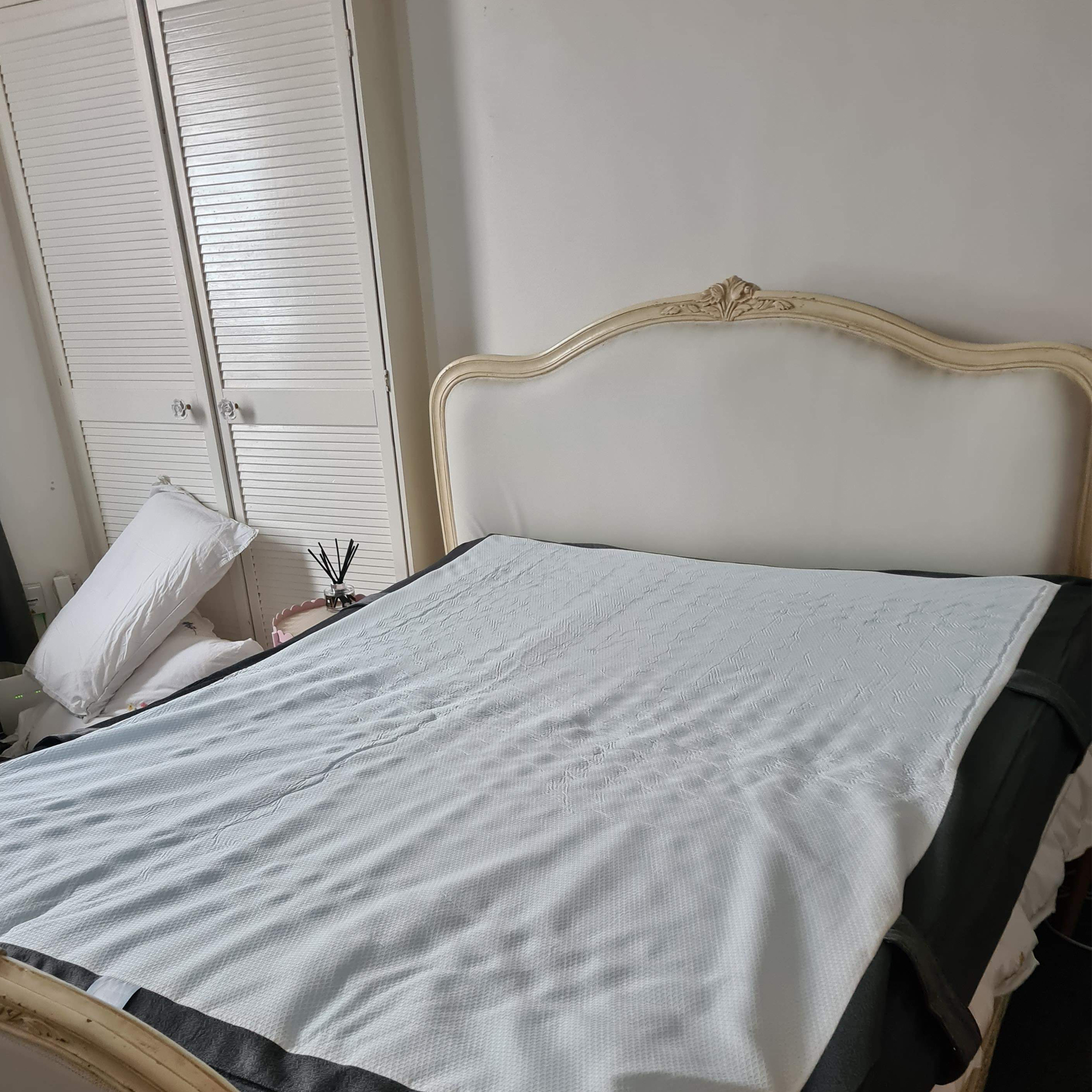
9. Environmental impact
The National Bed Federation estimates that 6.4 million mattresses were disposed of between 2017 and 2021, and only 14% recycled. The rest are likely to have ended up in landfill which is a big problem for the environment. So, buying from a mattress from a manufacturer that considers its ecological impact can be a very important purchasing decision.
As opposed to a mattress made predominantly from natural materials – such as the Hypnos Pillow Top Select mattress or Woolroom Hebridean 3000 mattress that Ideal Home has tested – a synthetic mattress made from petrochemicals can also take a significant toll on the environment.
Thankfully some synthetic mattress manufacturers, such as Simba, are becoming more aware of their environmental impact and looking to use recycled synthetic materials within their mattress's construction, alongside considering how their mattress can be recycled at the end of their lifespan to avoid landfill.
However, I couldn't find any information that suggests any of the materials used in the production of the Emma Premium mattress came from recycled sources, which is a shame. The brand also doesn't seem to offer a mattress recycling service, or provide much publically available information on any measures it may be taking to reduce its environmental impact.
Emma does state some of the mattresses returned via its sleep trial offer are refurbished (that means the mattress is carefully examined, the cover is replaced, and the foam is subjected to UV light decontamination) but I couldn't find any details online as to what happens to those Emma mattresses deemed unsuitable for resale.
How I tested

I'm Molly, one of the Ideal Home team's Consumer Experts. I've previously put two of Emma's bestselling mattresses through their paces, so I was eager to find out how the brand's most affordable hybrid mattress would measure up. Here are my sleep stats:
Sleep position: side and back
Tension preference: medium firm
Sleep problems: lower body aches, hip pain
Height & weight: 5ft 6 & 70kg (myself) 6ft 1 (my partner)
During my mattress testing process I assessed ten factors that the Ideal Home team deems vital to any mattress purchase.
I assessed the mattress for comfort, responsiveness, motion isolation, temperature regulation, and edge support through at home testing. This means that I slept on the mattress for a minimum of two weeks before writing my review.
I also took into consideration durability, any sleep trials available, the delivery process, and the mattress's environmental impact and its value for money.
Where possible, I also took into account third-party customer reviews – to see if they aligned or were at odds with my own experience – before writing my own review and giving this mattress a star rating.

Molly is Ideal Home’s Kitchen Appliances Editor, the Ideal Home Certified Expert on Appliances. An all-around cooking and baking enthusiast, she loves finding the next must-have product for readers that will their kitchen a better place. She joined the team in September 2022 after working on the editorial teams of Real Homes, Homes & Gardens and Livingetc.
For the last 4 years, she's been reviewing hundreds of small appliances; conducting tests at home or in the Ideal Home test kitchen. She would be hard-pressed to pick a Mastermind specialist subject but air fryers are her ultimate area of expertise, after testing just about every single one released since 2022.
To keep ahead of trends and new releases, Molly has visited the testing and development spaces of multiple kitchen brands including Ninja Kitchen and Le Creuset as well as attended consumer shows such as IFA, hosted in Berlin to see the cooking innovations of the future.